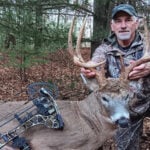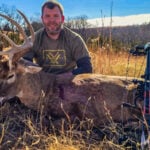LAST UPDATED: January 12th, 2016
The rut is a magical time of year for deer hunters. Seeing deer act like rutting deer are supposed to is why many deer hunters go to the woods each year. There’s just something about watching a buck trot through the woods, nose to the ground, on the trail of a hot doe.
But, despite the added advantage of estrous does and careless bucks, the rut can be a tricky time to hunt. Here are five scenarios that can make or break a season, depending on how hunters respond to them.
Scenario: The Lockdown
This topic gets a lot of discussion. It’s described as the time during the rut when most does are at peak estrous and bucks are locked down on them. Does don’t move much during the 24 hours they are at peak estrous. Therefore, the bucks with them don’t move much either.
This can pose a problem for hunters. If deer don’t move, hunters don’t see them. You have one of two choices in this scenario.
Make: Get in tight on those doe bedding areas. Deer aren’t moving much. The best place to be is right on the edge, or inside edge, of the doe bedding areas. Be careful when you enter them though. Remember, when hunting bedding areas, you need to get in the stand a full two hours before daylight. This gets you in there before the deer start filtering back through.
Break: Hunt food sources. You might kill one, but odds of scoring on a good one during the lockdown are minimal at best.
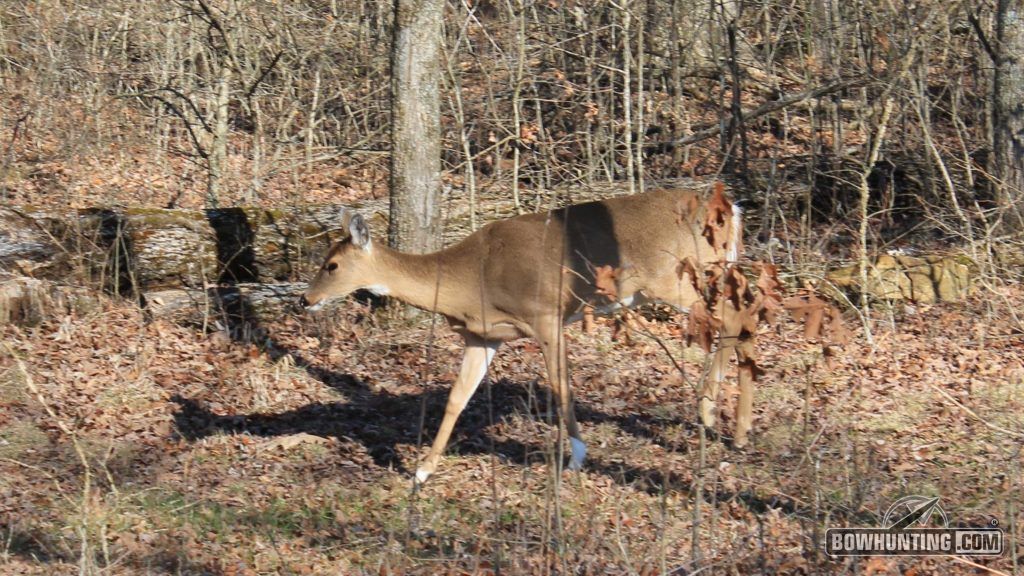
A doe steps out. She is obviously in estrous. She trots on across the field and beds down in some thick brush. A buck enters the open, hot on her trail, and beds down with her. They don’t budge for hours.
This situation can get a little frustrating. It’s not uncommon to see such a sight during the rut, either. If you’ve hunted much, it’s likely happened to you at one time or another.
Make: Those deer are bedded and will stay bedded for a while. That doe is probably getting attention from several bucks, especially if she’s one of the first to come into estrous. She won’t move much.
Get out of your treestand and make a move. Get downwind and put a stalk on. Take your shoes off, move when the wind blows and stay low to the ground, rising only for the shot.
Break: Stay in the stand and suck on your thumb. Enjoy the show. Because a show is all you are getting. No filled tags for you.
Scenario: The Departing Buck
I think it’s pretty common—when we finally see a mature buck—that it’s generally traveling away from us. At least, that’s how my good fortune generally pans out. It makes sense mathematically. Deer are walking in a direction other than our own a lot of the time.
This is a common one. We’ve all seen deer that made us drool, but that never came within range. They avoided us. We never got the chance to pull the trigger.
Make: Grab your grunt tube and talk to that deer. Start with a few subtle grunts. If that doesn’t turn him, snort wheeze in his direction. If that still doesn’t peak his interest, rattle. If he still won’t commit, wait until he’s just out of sight and throw an estrous doe bleat at him. If he doesn’t come immediately, give him time. If he heard you, he might swing back through.
Break: Don’t do anything. Just sit back and hope the deer comes back. Maybe eat a pop tart or drink a smoothie as he trots over the hill.
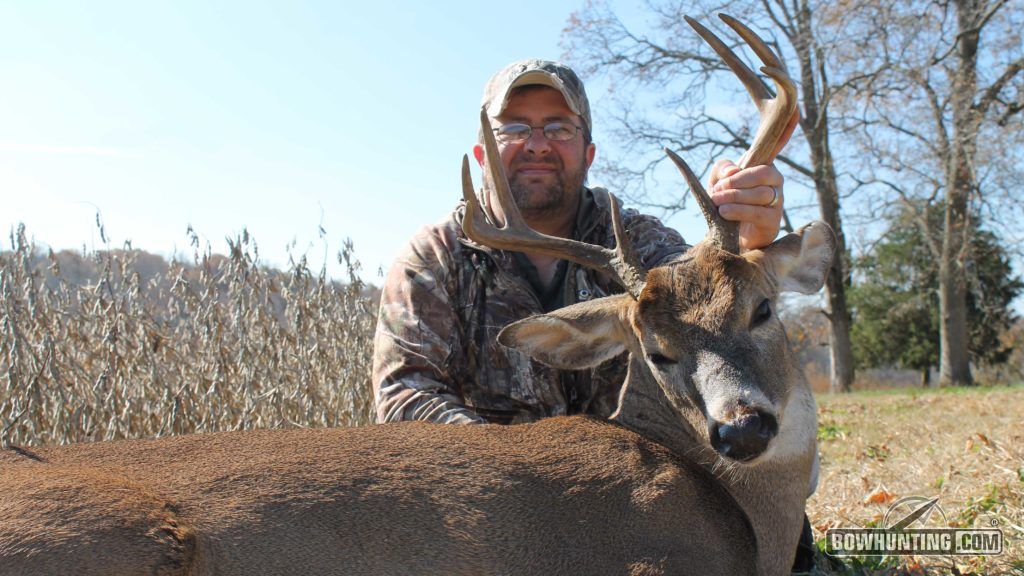
The rut is a great time to capitalize on frustrated bucks.
Scenario: The Prize Fighter
Nostrils flare and bloodshot eyes roll around in their sockets as two titans clash in a corn field. It’s the rut. And two big bucks are duking it out over an estrous doe. The winner gets the gal. The loser gets chased out of town.
I’ve been lucky enough to watch several buck fights in my day. And it’s always a blast when I see two whitetails sizing each other up. But there isn’t much you can do with them when they’re 300 yards away fighting like gladiators.
Make: Get aggressive. Wait until the fight is over. Give it a couple seconds (unless he’s leaving) and then grunt twice, followed by a snort wheeze. If he doesn’t commit, rattle. If he doesn’t hear you or doesn’t seem interested, come back with a decoy. If he comes back out, call to him and wait. Sometimes they need a visual to come marching in to.
Break: Be passive. Don’t call or decoy this deer. He’s a sissy and won’t like your decoy.
Scenario: The Passive Deer
When we think of the rut, we think of all the fighting, chasing and breeding. But we never think of the passive whitetails that don’t participate in the breeding festivities. We often forget about those bucks.
Studies have proven that some bucks simply don’t participate (at least not very much) in the rut. These are generally very old, reclusive and timid deer.
Make: If you know he’s a passive deer, you have to use passive tactics. Bucks that don’t participate in the rut try to get as far from it as they can. They aren’t social. They don’t like being around other deer. That’s why you’ll find these bucks in the thickest, most remote areas of sanctuary cover available to that deer. Get back in the thick stuff with him and put yourself between his bed and his dinner table. One thing about these deer: It’s always about food, even during the rut.
Break: Use any kind of aggressive or rut-based tactic.
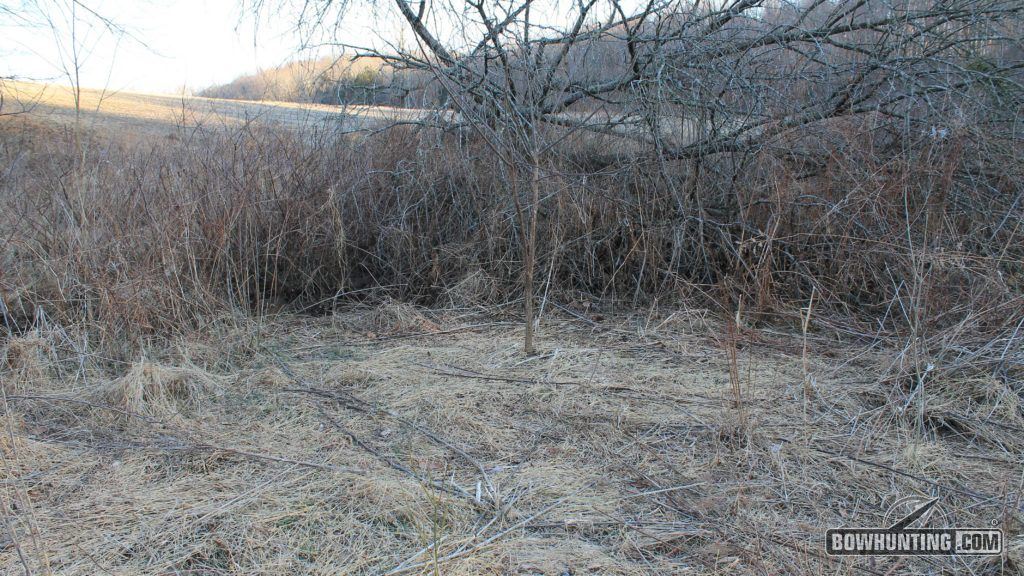
Stick tight to heavy cover when pursuing reclusive deer.
Conclusion
There’s a common trend with these scenarios: Be aggressive during the rut. The only time you shouldn’t is when a buck is passive and non-confrontational. Always consider mature bucks to be aggressive unless you see a particular deer behave in a way that makes you think otherwise. The rut is here. Make the most of it.

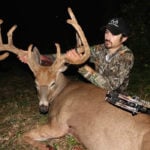 By
By 